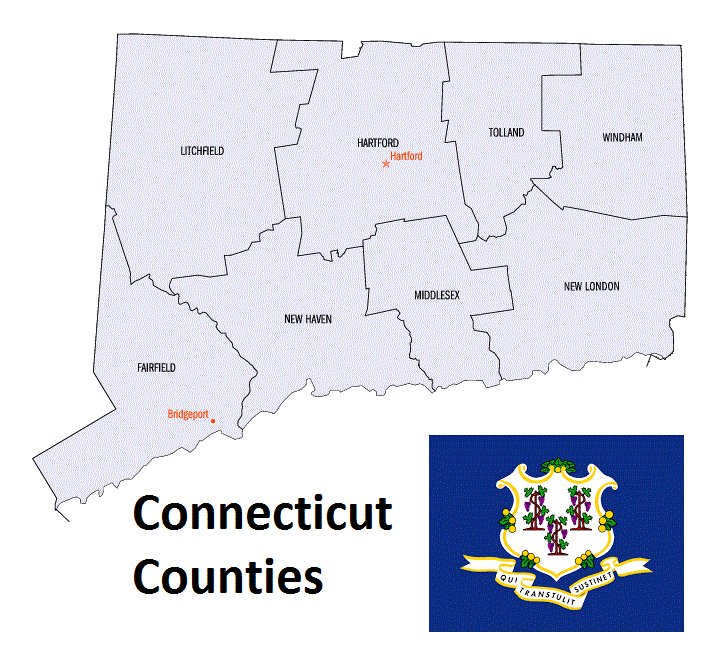List of All Counties in Connecticut
There are a total of 8 counties in the state of Connecticut. Among them, Fairfield County is the oldest one (established in 1666) while Middlesex County is the youngest (established in 1785). With population of 916,829, Fairfield County is the most populated. The biggest county by land area is Litchfield County (2,383 km²) and the smallest is Middlesex County (956 km²). Below please see all Connecticut counties which are listed in alphabetical order.
- Fairfield County, CT
- Hartford County, CT
- Litchfield County, CT
- Middlesex County, CT
- New Haven County, CT
- New London County, CT
- Tolland County, CT
- Windham County, CT
Map of Connecticut Counties














































